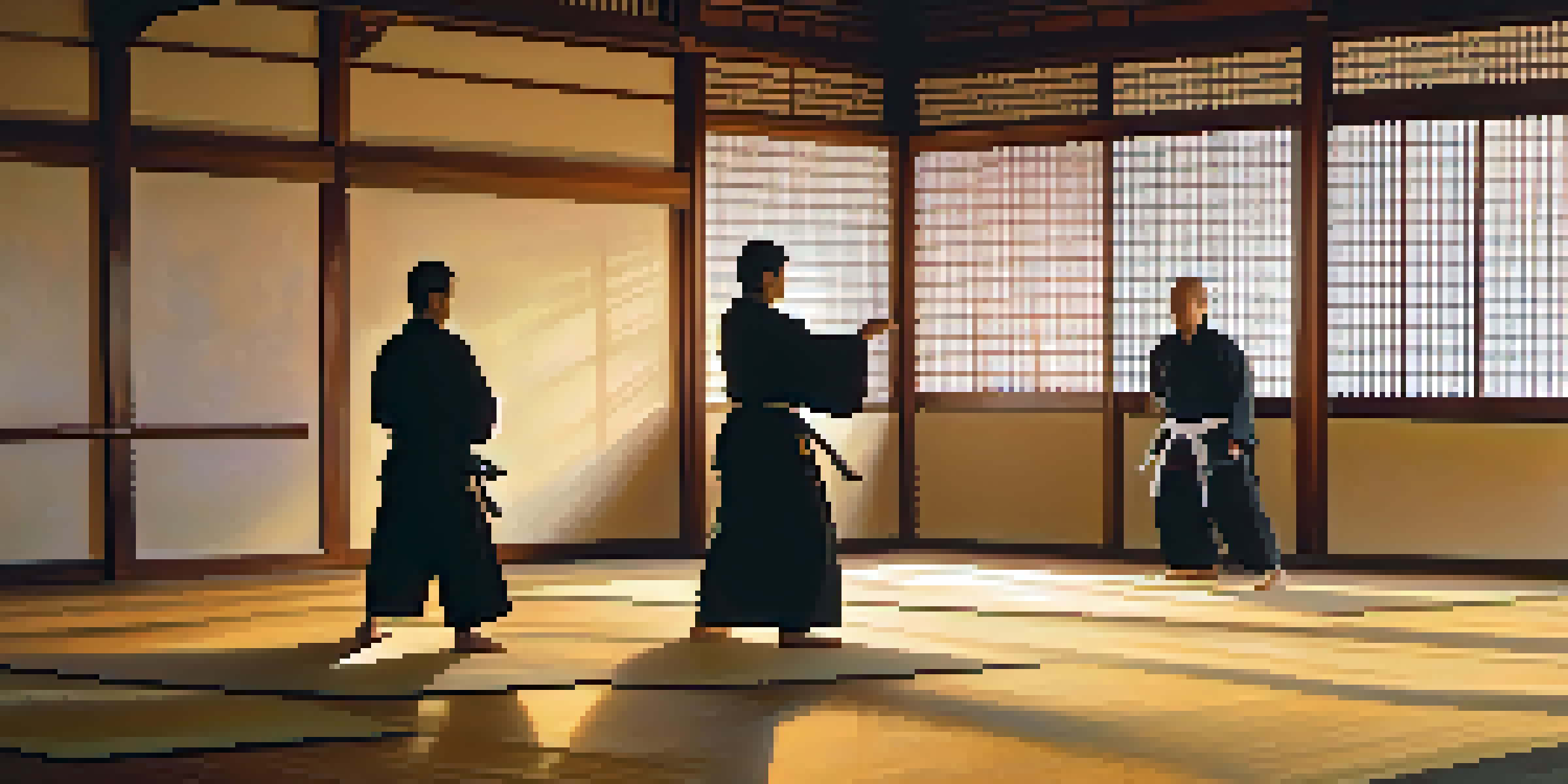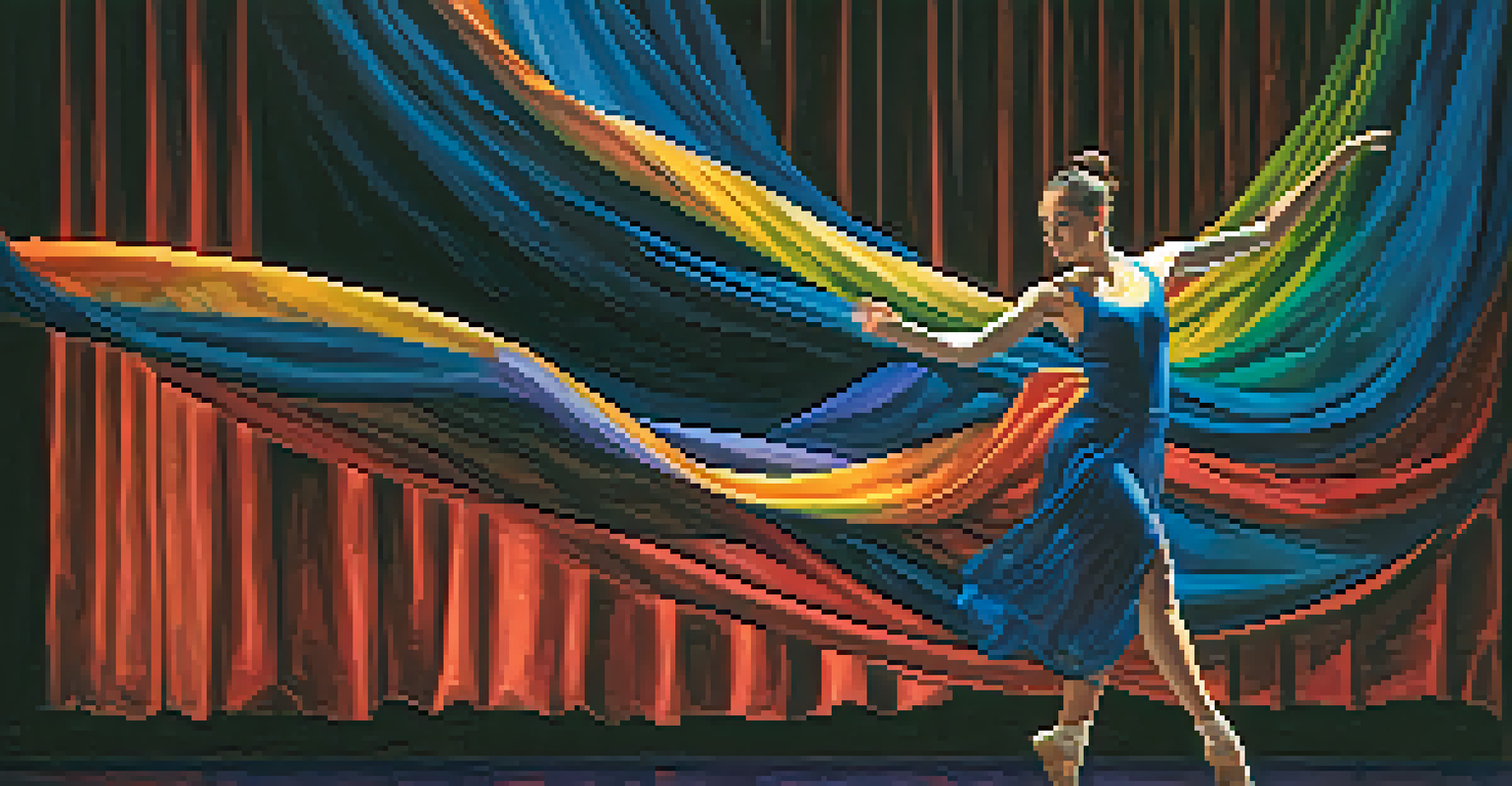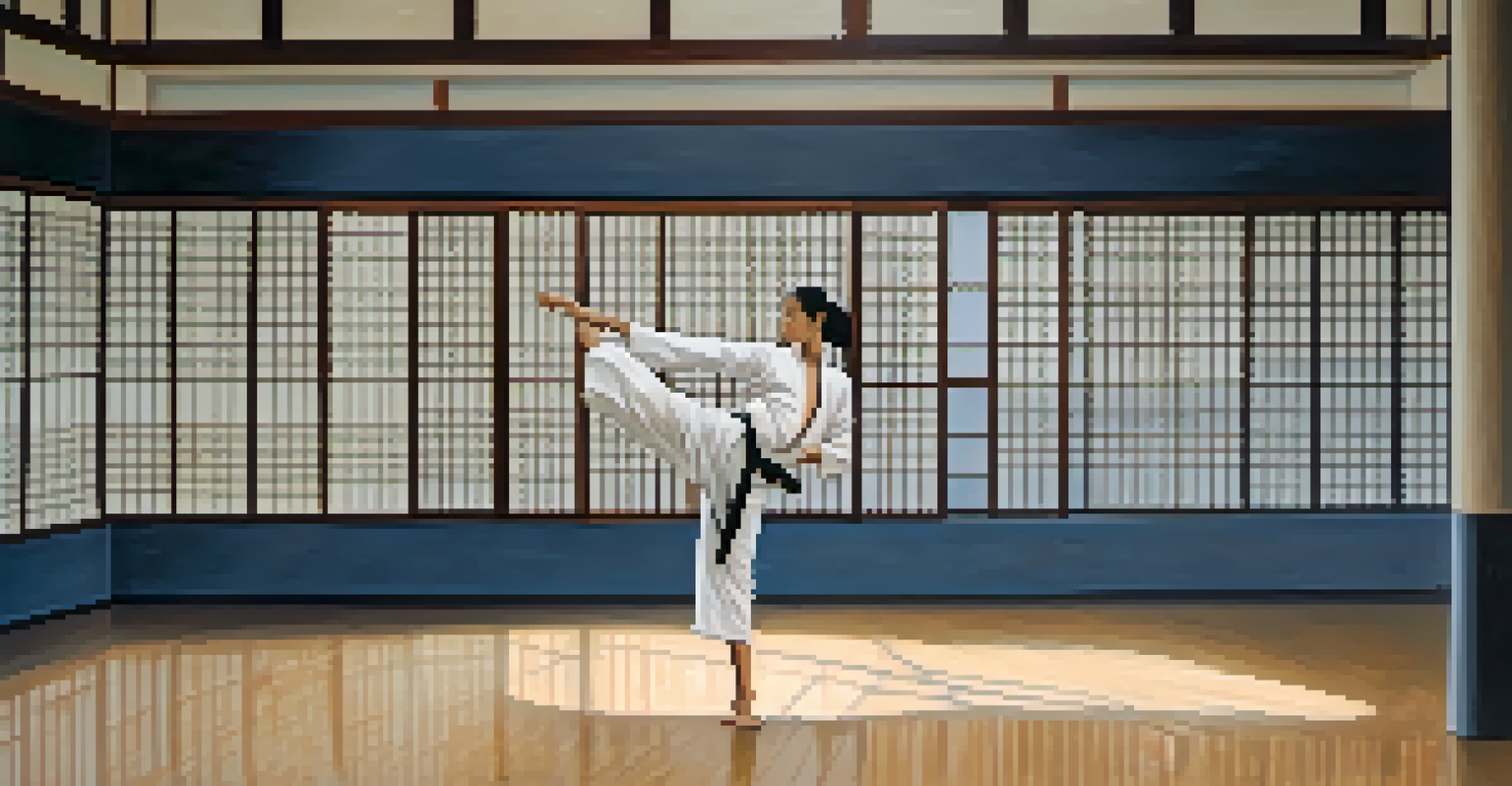Training Regimens: Comparing Martial Arts and Dance Preparation

Understanding the Foundations of Martial Arts Training
Martial arts training is built on a foundation of discipline, focus, and physical conditioning. Practitioners often engage in various activities such as sparring, form practice, and strength training. This multifaceted approach not only enhances technical skills but also develops mental resilience. For example, a karate student will spend hours perfecting their katas, which are choreographed patterns of movements that improve both muscle memory and situational awareness.
The journey of a thousand miles begins with one step.
In addition to physical prowess, martial arts training emphasizes the importance of respect and humility. Students are taught to honor their instructors and fellow practitioners, fostering a community of support. This cultural aspect can be a unique motivator, as the bonds formed during training often extend beyond the dojo. Picture a group of jiu-jitsu practitioners rolling on the mats, laughing and learning from each other, creating a vibrant tapestry of camaraderie.
Moreover, martial arts training often incorporates elements of self-defense, which adds a practical layer to the regimen. Practitioners learn to protect themselves and others, instilling confidence and a sense of security. This focus on real-world applications can be particularly appealing for individuals seeking not just fitness but also personal empowerment.
The Core Elements of Dance Training Regimens
Dance training is an art form that combines creativity with physical conditioning. Dancers engage in various styles, from ballet to hip-hop, each requiring specific techniques and training methods. A ballet dancer, for example, will focus on flexibility and balance, often incorporating barre exercises to strengthen their muscles. This rigorous training routine not only enhances their performance but also promotes overall physical health.

In contrast to martial arts, dance training places a significant emphasis on expression and artistry. Dancers are encouraged to convey emotions through their movements, making the training process as much about personal interpretation as it is about physical skill. Imagine a contemporary dancer fluidly moving across a stage, telling a story through their body — this is the essence of dance training.
Discipline Shapes Growth
Martial arts and dance training cultivate discipline, focus, and respect, which are essential for personal and communal growth.
Additionally, dance training often involves collaboration and teamwork, especially in group performances. Dancers must learn to synchronize their movements with others, which fosters a sense of unity and partnership. This communal aspect can be incredibly rewarding, as it builds lasting friendships and shared experiences among dancers.
Physical Conditioning: A Common Ground
Both martial arts and dance training prioritize physical conditioning, albeit in different ways. In martial arts, conditioning often includes strength training, cardio, and agility drills to prepare for intense sparring sessions. Practitioners might run laps or do push-ups, all aimed at enhancing their performance during fights. This rigorous physical preparation is essential for building endurance and resilience.
The only way to do great work is to love what you do.
On the other hand, dancers focus on flexibility, strength, and stamina through their training regimens. They often incorporate exercises targeting core stability, leg strength, and overall body awareness. A dancer might spend hours stretching and practicing jumps to ensure they can execute their choreography flawlessly. This dedication to physical conditioning allows them to perform at their best during performances.
Despite their differing approaches, both disciplines recognize the value of cross-training. Many martial artists incorporate yoga or pilates to enhance their flexibility, while dancers may engage in strength training to build muscle. This blend of techniques from both worlds can lead to improved overall fitness and performance.
Mental Preparation: Focus and Mindfulness
Mental preparation is a crucial aspect of both martial arts and dance training. In martial arts, practitioners often engage in meditation and visualization techniques to enhance their focus and mental clarity. This mental discipline allows them to stay calm under pressure during competitions or sparring matches. Imagine a martial artist visualizing their next move, channeling their energy into a focused mindset.
Similarly, dancers use mental preparation to enhance their performance quality. Techniques such as visualization help dancers imagine themselves executing choreography flawlessly, boosting their confidence. Before a big performance, a dancer might take a moment to mentally rehearse their routine, ensuring they are mentally prepared to take the stage. This practice can significantly impact their ability to connect with the audience.
Physical Conditioning Matters
Both disciplines prioritize physical conditioning through tailored exercises to enhance performance and prevent injuries.
The shared emphasis on mindfulness in both disciplines highlights the importance of mental strength. Practitioners learn to overcome self-doubt and distractions, fostering a strong sense of self-belief. This mental resilience can lead to personal growth, making both martial arts and dance not only physical activities but also powerful tools for self-improvement.
Skill Development: Technique vs. Expression
In martial arts, skill development heavily focuses on technique and precision. Practitioners must master various forms, strikes, and defensive maneuvers, often drilling these techniques repeatedly. For instance, a taekwondo student might spend hours perfecting their kicks to ensure they are executed with power and accuracy. This technical focus is essential, as it directly impacts their performance in competitions.
Conversely, dance training emphasizes expression and creativity alongside technique. While dancers certainly work on mastering their movements, there is a significant focus on interpreting music and conveying emotions. A contemporary dancer, for example, might explore how to express a feeling of joy through fluid movements, making their training as much about personal artistry as technical proficiency.
This distinction highlights the unique qualities of each discipline, yet both ultimately aim for mastery. Whether it’s perfecting a jump in dance or a roundhouse kick in martial arts, the dedication to skill development is a common thread that unites practitioners from both worlds.
Injury Prevention: Safety in Training
Injury prevention is a vital concern for both martial artists and dancers, as the physical demands of each discipline can lead to various injuries. Martial artists often engage in warm-up routines and cooldown stretches to prevent strains and sprains. A typical warm-up might include dynamic stretches and mobility exercises to prepare the body for intense movements, ensuring that practitioners can train safely.
Dancers, similarly, prioritize injury prevention through proper training techniques and body awareness. They often learn to listen to their bodies, understanding the signs of fatigue or strain. A dancer might incorporate foam rolling or massage into their routine to alleviate tension and promote recovery. This proactive approach to injury prevention is essential for maintaining longevity in their practice.
Mental Preparedness is Key
Practitioners in martial arts and dance utilize mental preparation techniques to boost focus, confidence, and overall performance.
Both disciplines highlight the importance of listening to one’s body and respecting its limits. Whether it's taking a break during a rigorous training session or seeking professional help for an injury, practitioners understand that safety must always come first. This shared commitment to injury prevention fosters a healthier training environment for everyone involved.
Finding the Right Balance: Training for Performance
Finding the right balance in training is crucial for optimal performance in both martial arts and dance. Practitioners need to navigate the fine line between pushing their limits and allowing for adequate recovery. In martial arts, this might mean varying the intensity of sparring sessions to avoid burnout. A well-structured training plan can help martial artists improve their skills while also maintaining their physical health.
For dancers, balancing rehearsals with rest days is equally important. Overtraining can lead to fatigue and decreased performance quality, so incorporating rest and recovery strategies is essential. A dancer might schedule lighter dance days or cross-training activities to ensure they stay fresh and energized for their performances. This balance between effort and recovery can significantly impact their overall success.

Ultimately, both martial artists and dancers share the goal of achieving peak performance while honoring their bodies. By recognizing the importance of balance in their training regimens, practitioners can sustain their passion and commitment to their craft for years to come.